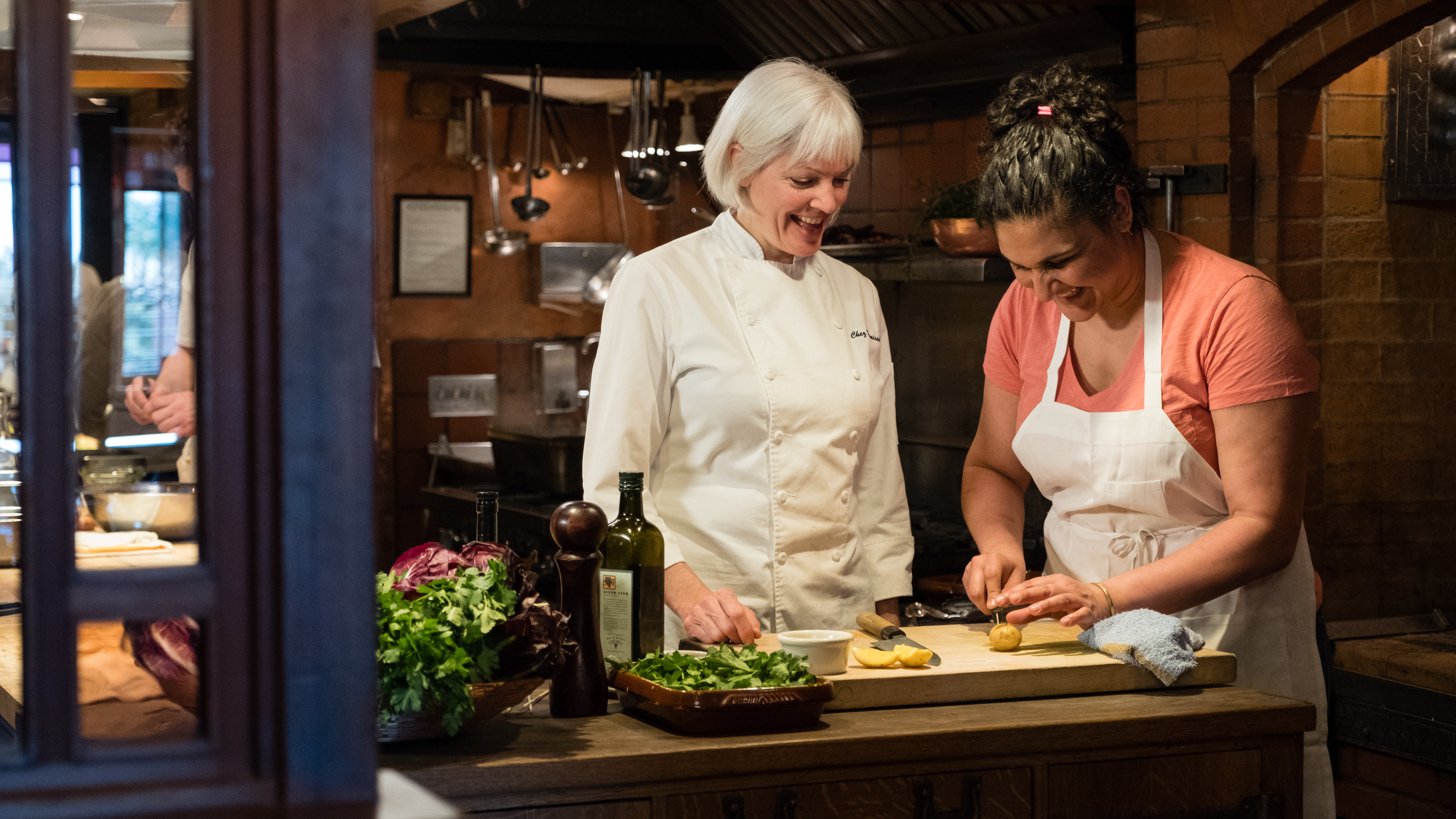Netflix's Salt, Fat, Acid, Heat breaks Food Down To Its Simple, Delicious Basics
Samin Nosrat has a job anyone would envy. She's a celebrity chef, a food columnist for The New York Times, and is known as the person who taught author Michael Pollan how to cook. In her new Netflix series Salt, Fat, Acid, Heat—based on her best-selling, James Beard Award-winning book of the same name—she travels the world searching for the basics that make food delicious. The prevailing concept is that cooking has become too complicated; Nosrat's goal is to break cooking down to its simplest elements, to make the secrets of delicious food accessible to everyone from glamorous foodies to the amateur home cook.
To accomplish this, Nosrat goes right to the various sources from across the globe. For the "Fat" episode, she visits olive farms in Italy to harvest olives and then watch the oil being pressed. In "Salt," she goes to Japan to examine dizzying varieties of sea salt and soy sauce. "Sour" sees her head to Mexico to explore peppers and citrus. Throughout, Nosrat fires off truths that seem obvious, but only after she states them, like the fact that "salt is one of the few elements that unites all cuisines" or how the blandness of how corn tortillas balance out acidic salsas and spicy peppers. When you top something with a dollop of sour cream, you're adding both acid and fat, enhancing the favor of whatever you're combining it with; when you add items like olives, cheese, pickles, and capers, you're injecting valuable salt.
While knowing where all salt comes from (the sea) may be beneficial to your cooking, if Nosrat was just lecturing, this series wouldn't be as fun as it is. Her enthusiasm is what sells the show, as she's as unabashedly thrilled to get to taste various stages of aging parmesan, offering poetic descriptions of how the creamy butteriness and sweetness of the cheese transforms over time. She also gets to observe an Italian matriarch form the perfect pesto with mortar and pestle, and tastes a pepper so hot it immediately makes her eyes water. ("Eh, crying's good," her dining companion notes.)
Nosrat's challenge is to then interpret these lessons for the home viewer, and some of those are easier than others. She helpfully outlines how to grill steaks at home in the "Heat" episode even while utilizing a restaurant's oven, or how to spot desirable steak marbling when shopping for meat. She points out that different types of salt have extremely different levels of saltiness, and that all browning intensifies the flavors of the original food, from Brussels sprouts to butter. But Nosrat's habit of using the cream of Red Poll cows, for example, isn't extraordinarily helpful to those of us who don't have her numerous passport stamps or international behind-the-scenes access. She's also more fearless and experienced than most, chomping on a piece of fat sliced right off of a pig carcass.
Still, it's awfully fun to watch her visit these disparate places, with gorgeous travel cinematography that may make you reconfigure your next vacation so you can tour parmesan cheese producers. After all, even if your own kitchen looks nothing close to a gourmet's, Nosrat points out, "Good cooking is universal. Ingredients may change, but fundamentals remain." Salt, Fat, Acid, Heat breaks down those fundamentals into easily digestible tidbits, augmented by Nosrat's infectious narration and knowledge. After viewing, you mind find yourself considering a citrus marinade or some pink Himalayan sea salt the next time you're in your kitchen, so that like Nosrat, you can kick even your simple homemade meal into high gear.
